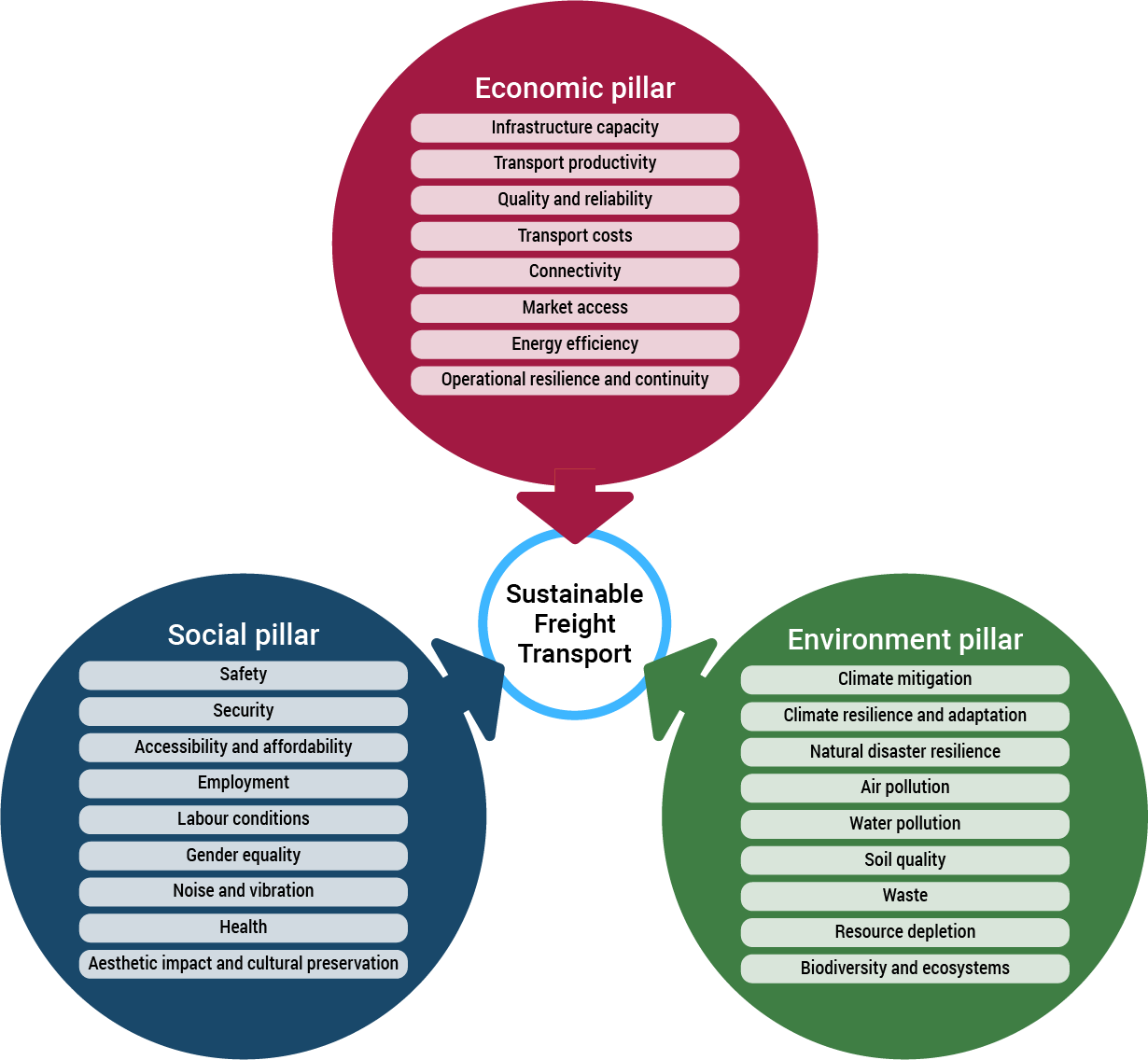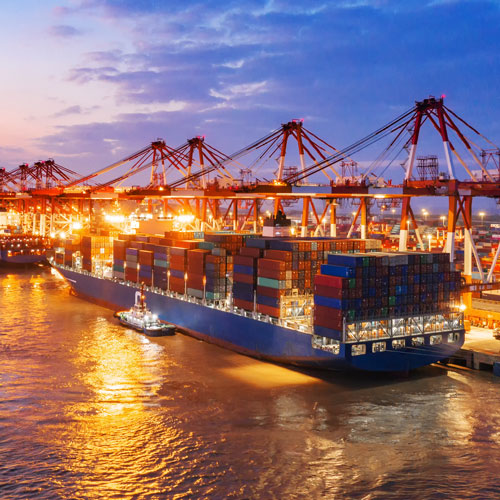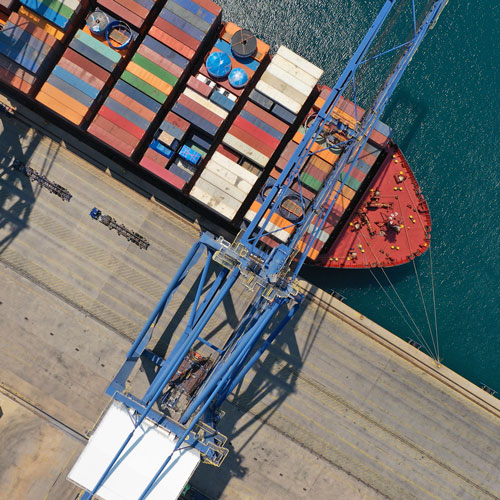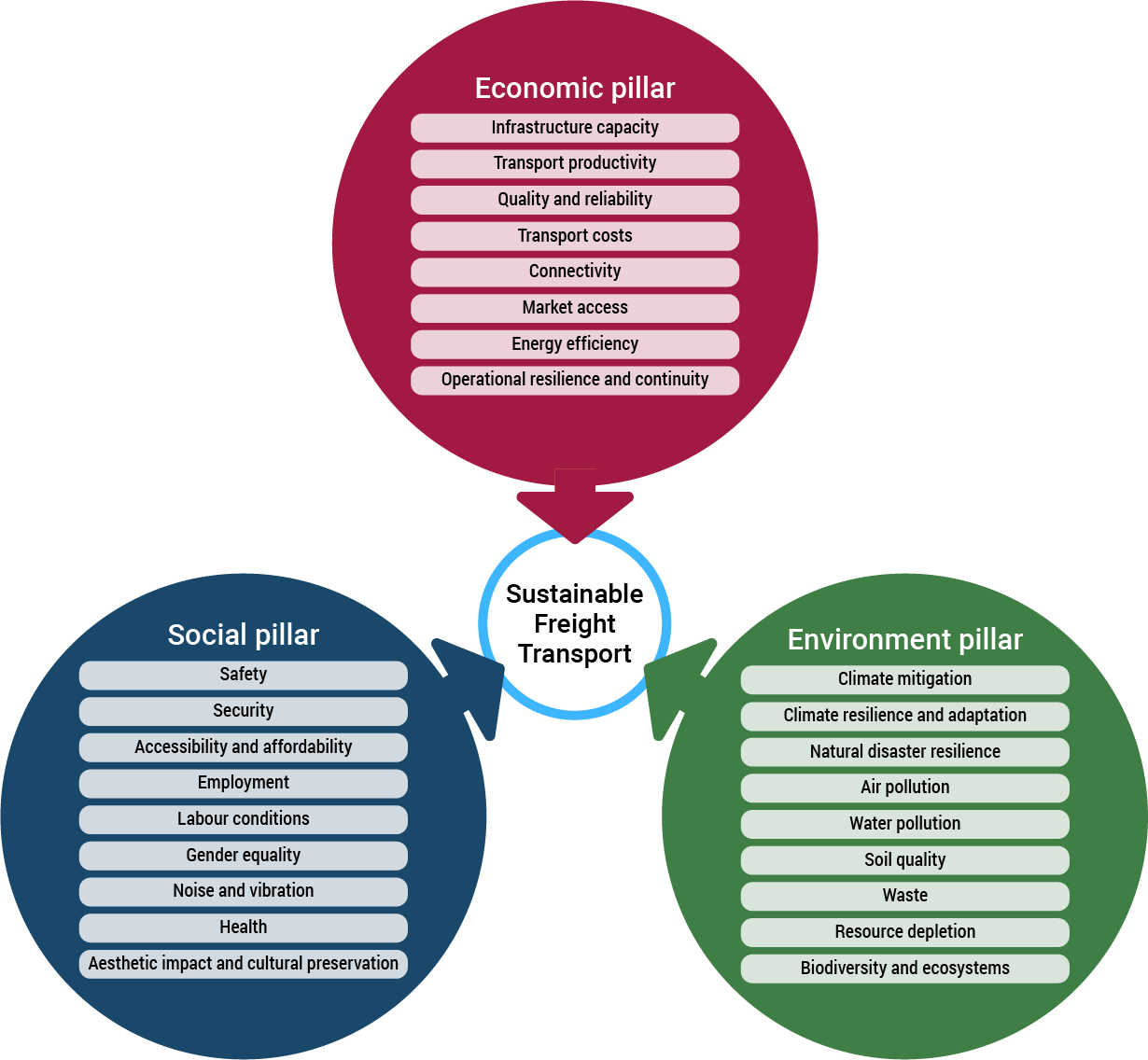Several elements underpin the economic, social, and environmental dimensions of freight transport. The underlying linkages and intersections between these elements underscore the sustainability triple bottom line of the freight transport sector:
- Economic sustainability: relates to factors such as market access, trade competitiveness, costs, quality, reliability, productivity, resilience, connectivity, infrastructure investment, energy efficiency, operational continuity, and, sustainable production and consumption.
- Social sustainability: relates to factors such as safety, security, employment (e.g. gender), labour conditions, affordability, aesthetic impacts, cultural preservation, health, noise and vibration.
- Environmental sustainability: relates to externalities such as GHG emissions, pollution (air, water and soil), resource depletion, land-use and habitat fragmentation, waste, biodiversity loss, ecosystems degradation, and climate disruptions and impact.
Existing definitions of sustainable freight transport may vary and may promote one particular dimension, such as the environment (green transport), society (inclusive transport) or the economy (efficient and competitive transport). See the link on the select definitions of sustainable freight transport.
From UNCTAD’s perspective, and while not intended as an exhaustive list, achieving a sustainable freight transportation entails, among other features, the ability to provide transportation that is safe, economically efficient, competitive, socially inclusive, accessible, reliable, affordable, fuel-efficient, environmentally friendly, low-carbon, and resilient to external shocks such as disruptions resulting from climate change factors and natural disasters.

Sustainable freight transport and the triple bottom line









